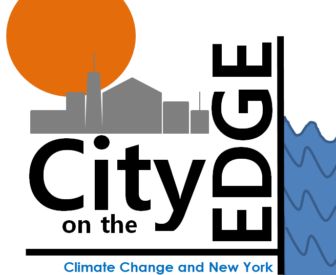
NYC Parks Department / Flickr
A verdant corder of Alley Pond Park in Bayside, Queens
City Limits is participating along with hundreds of news organizations around the world on climate-related stories in the week leading up to the United Nations Climate Summit. More at #CoveringClimateNow.
At a discussion last Tuesday evening, three experts on New York City’s environment joined in discussion about New York City’s natural areas, the biodiversity that exists within them and how climate change is going to affect them.
You might have heard about the proposed harbor-wide sea wall, and the Lower East Side resiliency project where they’re elevating the entire park as some examples of how the city will be affected by climate change and what it is doing to prepare for it.
This discussion touched on those projects and but also went a bit further, delving into discussions about pollinators, wetlands and ecosystem research. Panelists included Annel Hernandez, Associate Director at New York City Environmental Justice Alliance, Liam Kavanagh, First Deputy Commissioner at New York City Department of Parks & Recreation and Sarah Charlop-Powers, Executive Director and Co-Founder at Natural Areas Conservancy.
Some major points emerged:
There’s a lot of biodiversity in NYC but not a lot of people thinking about it.
You wouldn’t know it walking down pretty much any block in lower Manhattan but there are over 7,000 species of plants and animals within the five boroughs.
Big parks like Inwood and Van Cortlandt have the most biodiversity, with numbers of species similar to some state parks like Bear Mountain. Also, over 350 species of birds migrate through the city each year.
There are also a lot of natural areas in NYC that aren’t well protected from development.
There are 20,000 acres of natural areas in the city, says Charlop-Powers, but only 10,000 of these acres are NYC parkland are under the control of the Parks Department. Before Natural Areas NYC there was no single organization thinking about the management of all these spaces. They have a handy map here.
Even small natural areas are important for ecosystem health. For example, “Many pollinators have a flying range of under a mile,” says Charlop-Powers.
“Small wildlife—connector spaces like small parks— allows those species to thrive,” she said.
A big problem though is that there aren’t adequate laws to protect all the city’s natural spaces.
The city’s extensive zoning code, which is over 36,000 pages, has over 400 references to trees and natural areas and over 3,500 reference to parking, says Kavanagh.
Another set of regulations, the wetlands law, does not prevent development of wetlands.
“It permits it, it mitigates it and regulates it, but it does not prevent it from happening,” says Kavanagh. In fact, a wetland development is currently underway in Staten Island, where some community members are pushing back.
Natural spaces are often distributed throughout the city inequitably.
Sure, there’s some real biodiversity here, and yes, there are threats from development, but who gets to enjoy the existing areas?
“The real issues come in in areas where there are just no parks,” says Hernandez. “In Williamsburg, the majority of parks are cement. The real issue there is making sure that they actually have green spaces, not just wetlands.”
As the climate changes, pressure will be put on our natural spaces. The parks department is already seeing effects.
“We see a lot of flooding now that never happened 15 years ago,” Kavanagh said. It’s causing more disruption. We’ve had to adapt—hire more people—and make plans.”
The Parks Department is working actively to mitigate these new threats but it also might be bearing an uneven burden across the city—we’re not seeing adequate city-widel policies or investments that are going to help the city adapt, both Charlop-Powers and Kavanagh say.
The Parks Department is bearing the weight of being the natural areas and natural resources champion for the city rather than having a strong policy that prioritizes natural areas across city agencies and departments Charlop Powers said.
“I don’t see a huge investment on the immediate horizon into climate adaptation, says Kavanagh. “Certainly not on the level that is needed to really make a difference in the lives of people.”
Watch the full discussion below.









